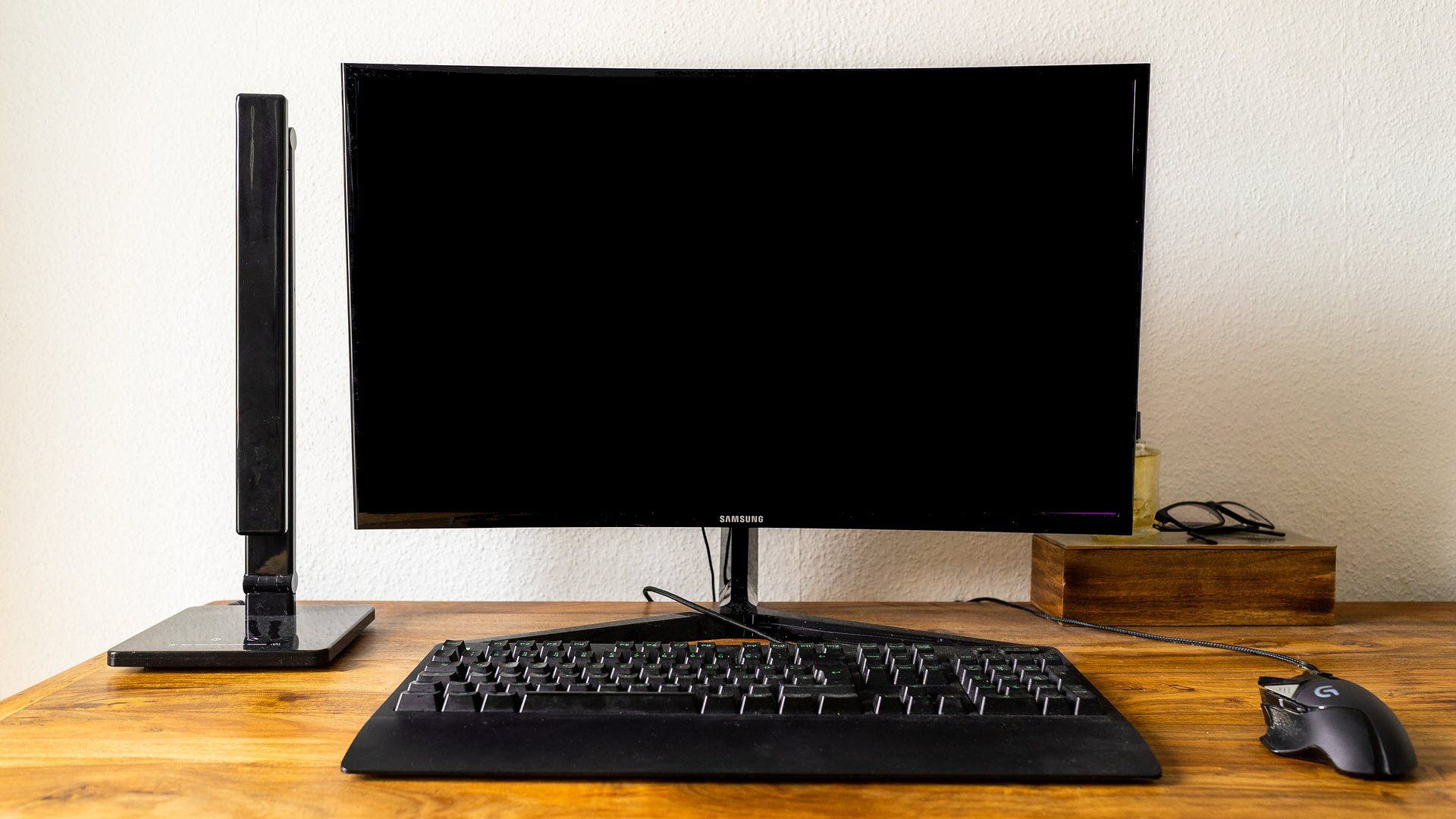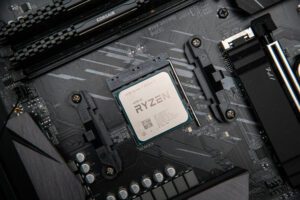Computer monitors go black because of hardware-related issues or incorrect power configurations. It could be due to outdated graphics card drivers or an improperly connected display cable.
Computer users frequently encounter their computer monitor going black, which can be frustrating and disruptive, especially if the user is working or watching multimedia content. Several reasons can lead to the monitor going black, including outdated graphics card drivers or wrong power configurations.
This article will discuss some of the top causes of computer monitors going black and some troubleshooting tips to fix the issue. Whether you are a gamer, a graphic designer, or a regular computer user, you will find this article helpful. So, let’s dive into the reasons why your computer monitor keeps going black.


Credit: www.drivereasy.com
Common Reasons Why A Computer Monitor Goes Black
It’s frustrating when your computer monitor goes black unexpectedly, especially when you’re doing something important. There are several reasons why this can happen, and it’s essential to diagnose the issue correctly. Here are some common reasons why a computer monitor goes black:
Loose Or Damaged Cables
If your computer monitor keeps going black, there’s a possibility that you’ve got loose or damaged cables. Check all the cables, including the power cable, hdmi, vga, or dvi cables, and make sure they’re securely plugged in. Try unplugging and plugging the cables back in.
If you have a spare cable, swap it with the current one, and see if it makes a difference.
Power-Saving Mode
If your monitor is in power-saving mode or is set to turn off after a short period of inactivity, it could be the reason why it’s going black. To check if this is the case, move your mouse or press any key on your keyboard to turn the monitor back on.
To change the power settings, go to control panel > power options. Select “high performance” and adjust the settings accordingly.
Graphics Driver Issues
Outdated or corrupt graphics drivers can cause the monitor to go black or display an error message. To fix this issue, update your graphics drivers to the latest version. You can do this manually or use a third-party software like driver booster to update them automatically.
Hardware Problems
Sometimes, the reason why your computer monitor keeps going black is because of hardware problems. This could be due to a damaged graphics card, motherboard, or monitor. You may need to replace the faulty hardware component to fix the problem.
There are several reasons why your computer monitor keeps going black. Checking the cables, adjusting the power settings, updating graphics drivers, or replacing faulty hardware components are some of the ways to troubleshoot the problem effectively.
Troubleshooting Tips To Fix A Black Computer Monitor
Has your computer monitor ever suddenly gone black, leaving you in the dark? A black screen can be a real pain, but don’t fret. This troubleshooting guide will give you some useful tips to fix the problem. Here are some possible solutions to try.
Check The Cables And Connections
Before you do anything more complicated, check that your monitor’s cables and connections are properly plugged in. Loose or faulty cables may cause your monitor screen to go black. Here’s how you can check it.
- Ensure that the power cable for the monitor is plugged in properly. Wiggle it a little to make sure there is no loose-fitting.
- Check the video cables that run from your computer to your monitor. Ensure they are correctly connected.
- If there’s a switch box between your computer and monitor, ensure that it is correctly connected and plugged in.
Adjust Power Settings
Your computer’s power settings may also cause the screen to go black. It’s possible that your monitor might be in power-saving mode or have a blank screen saver. Adjusting the power settings can help you resolve the issue. Here’s how:
- Check your computer’s power-saving settings and adjust them so that your computer won’t go into sleep mode automatically.
- You can disable the screen saver in your system settings.
Update Graphics Driver
If you have outdated or corrupted graphics drivers, it can cause your screen to go black. Updating the graphics driver can help you fix the problem. Here’s how:
- Press the “windows key + x” to open the device manager and look for display adapters.
- Right-click on the display adapter and click on “update driver software”
- Let your computer and internet connection work to search and install the latest driver for the display adapter.
Run Hardware Diagnostic Tests
If the above steps didn’t work, your computer’s hardware may be causing the issue. You can run diagnostic tests to check if there is any hardware problem with your computer. Here’s how:
- Look for diagnostic tests or system tests in the user manual that came with your computer or monitor.
- Run a hardware diagnostic test using a reliable pc diagnostic software.
A black screen can be frustrating, but there are several troubleshooting tips that you can try to diagnose the problem. Check cables and connections, adjust power settings, update graphics drivers and run hardware diagnostic tests. By following these tips, you can identify and offer solutions to the issue that is causing your computer monitor to go black.
Specific Steps To Fix A Black Computer Monitor
A black computer screen can be frustrating, but the good news is that it’s often a simple problem that you can fix on your own. Here are some step-by-step guides to help you resolve the issue:
Step-By-Step Guide To Fixing Loose Or Damaged Cables
- Check all the cables connecting your monitor, cpu, and power socket to ensure they are properly plugged in.
- If you find any loose cables, unplug them and then reconnect them properly.
- Make sure all the connectors are clean and free of dust and debris that may obstruct a proper connection.
- Consider replacing any damaged cables or connectors, as they can cause issues with your computer monitor.
Step-By-Step Guide To Adjusting Power Settings
- Open the “control panel” in your system by typing it in the search bar on your computer.
- Click on “power options”
- Choose “high performance” as your power plan if it’s not already selected. This option helps to ensure that your monitor remains active.
- If you have a desktop computer, check to ensure that your monitor is receiving the right amount of power from your outlet.
Step-By-Step Guide To Updating Graphics Driver
- Open the “device manager” on your computer by typing it in the search bar.
- Look for the “display adapters” option and click on it to see your graphics driver.
- Click the “update driver” button to check if there are updates available.
- Follow the prompts to finish updating your graphics driver.
- Restart your computer after the driver has been updated.
Step-By-Step Guide To Running Hardware Diagnostic Tests
- Click on the windows button on your keyboard and type “windows memory diagnostic” in the search bar.
- Open the windows memory diagnostic tool, and click on the “restart now and check for problems” button.
- After your computer restarts, wait for the diagnostic tool to run and diagnose any errors or issues with your computer’s hardware.
- Fix any problems that the tool identifies.
By following these steps, you should be able to troubleshoot and fix most issues with your computer monitor. If the problem persists, you may need to consult with a specialist or technician to identify and resolve the problem.
How To Prevent Black Monitor Issues In The Future
Why does my computer monitor keep going black? The troubleshooting guide
If your computer monitor keeps shutting off, it can be frustrating, especially if you are in the middle of working on something essential. However, there are several reasons why your monitor keeps going black, and some can be easily resolved with a little troubleshooting.
In this section of the article, we will discuss how to prevent black monitor issues in the future for a stress-free computing experience.
Regular Maintenance Tips To Prevent Hardware Issues
Basic maintenance can go a long way in preventing hardware-related issues that lead to a black monitor. Here are some essential maintenance tips to keep in mind:
- Regularly clean your computer and monitor’s dust and debris with a soft cloth.
- Ensure that your computer and monitor are kept in a well-ventilated area to prevent overheating.
- Keep your computer and monitor away from direct sunlight or heat sources.
- Ensure that your computer and monitor’s power supply is stable and consistent, and the voltage is within the recommended range.
Best Practices For Handling Cables And Connections
Issues related to cables and connections are a common reason for a black monitor. Here are some best practices to avoid these issues:
- Ensure that all cables and connections are properly secured and firmly attached.
- Use high-quality cables that can handle high-resolution images without interference.
- Avoid using any adapters or extension cords that can disrupt the signal between your computer and monitor.
- Regularly check all cables and connections to ensure that they are intact and not damaged.
Tips For Updating Software And Drivers Regularly
Outdated software and drivers can also lead to a black monitor. Here are some tips for updating them:
- Regularly check for software and driver updates for your computer and monitor.
- Ensure that you download and install updates only from the official sources.
- Regularly check the manufacturer’s website for the latest firmware updates for your monitor.
- Uninstall old or outdated software and drivers to free up system resources.
By following these tips, you can prevent black monitor issues in the future and ensure that your computing experience is stress-free. Remember to perform regular maintenance, handle cables and connections with care, and update software and drivers regularly.
Frequently Asked Questions On Why Does My Computer Monitor Keep Going Black
What Are The Possible Reasons For A Black Screen?
A black screen can occur due to outdated drivers, loose cables, or power supply issues.
How Can I Troubleshoot My Black Screen Problem?
You can try reconnecting cables, updating drivers, and checking power sources. Run diagnostics if needed.
When Should I Seek Professional Help For A Black Screen?
You should seek professional help if diy troubleshooting fails, the monitor is old, or if the problem persists.
Conclusion
After going through this informative blog post, it’s clear that black screen issues on your computer monitor can arise due to various reasons. It would be best to start by checking your computer’s cables first, followed by updating the drivers and the operating system.
In some cases, it could be an issue with the graphics card, and the only solution would be to replace it. It’s always better to have a reliable anti-virus software installed and regular system checks. Also, be sure to check the power settings and adjust them accordingly.
Remember, taking action at the first signal of a black screen can save you time, money, and a lot of frustration. So, always keep a keen eye on your computer’s performance, and in case of a black screen, try the solutions mentioned in this blog post before taking it to a professional.



